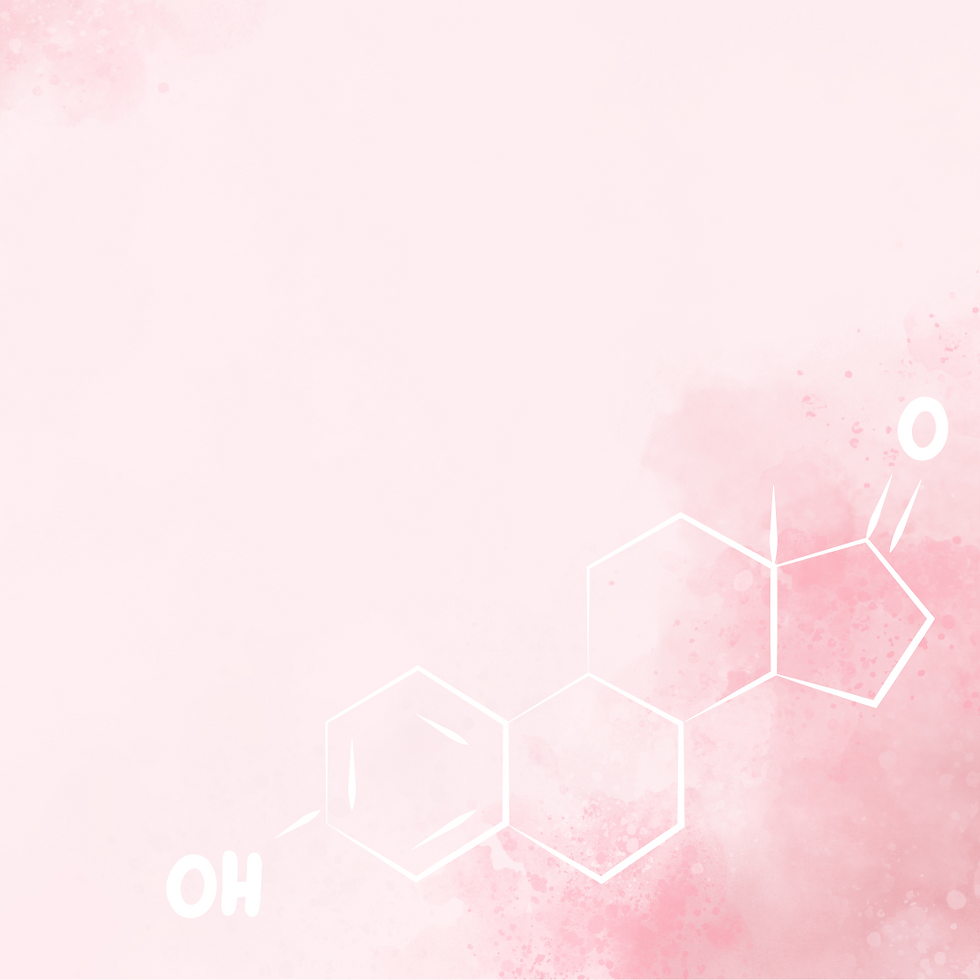What is micronised or bio-identical hormone therapy for menopause? And is it safer than traditional HRT?
- Sara Harris

- Sep 26, 2024
- 3 min read

This is a question that often comes up for many women around the perimenopause/menopause phase. Micronised, or often referred to as bio-identical, hormones have the same molecular structure to the hormones that our body produces. Whilst they are still synthetically produced they are made from naturally derived ingredients and can be used as hormone replacement therapy instead of the synthetically derived HRT that many are more familiar with.
Micronised (bio-identical or body-identical) progesterone and bio-identical oestrogen are considered safer and more effective alternatives to traditional hormone replacement therapy (HRT) for several reasons:
Natural Molecular Structure: Bio-identical hormones have the same molecular structure as the hormones produced by a woman's body. This allows them to be more easily recognised and metabolised, reducing the risk of side effects and promoting better physiological outcomes compared to synthetic hormones used in traditional HRT.
Lower Risk of Blood Clots: Studies show that bio-identical progesterone, particularly in its micronised form, does not carry the same risk of blood clots, strokes, and cardiovascular issues associated with synthetic progestins found in traditional HRT. This makes bio-identical progesterone a safer option for many women, particularly those concerned about cardiovascular health.
Reduced Risk of Breast Cancer: Bio-identical progesterone is linked to a lower risk of breast cancer compared to synthetic progestins. Some studies suggest that synthetic hormones used in traditional HRT may increase the risk of breast cancer, while bio-identical progesterone is believed to have a more neutral or protective effect on breast tissue.
Fewer Side Effects: Women using bio-identical hormones often report fewer side effects, such as bloating, mood swings, or weight gain, compared to those using synthetic HRT. The body’s ability to metabolise these hormones more naturally likely accounts for this improvement in overall tolerance.
Improved Quality of Life: Bio-identical oestrogen, such as estradiol, mimics the body’s natural oestrogen and is more effective in alleviating menopausal symptoms like hot flushes, vaginal dryness, and sleep disturbances, while supporting bone density and heart health. The individualised dosing and bio-identical nature of these hormones can enhance well-being and symptom relief for many women.
Micronised bio-identical progesterone and oestrogen provide a safer, more physiologically compatible alternative to traditional HRT, with fewer risks related to cardiovascular disease, cancer, and other adverse effects. Many women experience better symptom management and an improved quality of life when using bio-identical hormones.
As with all types of HRT, it is important to do this under carefully considered medical care to ensure correct dosage and use. Seeking support from a menopause-informed counsellor could also be beneficial to address some of the underlying factors that can contribute to how a woman experiences menopause. Our hormones are simply responding to the quality with which we live life - so it's well worth looking at this from a number of angles, including the very basics of self-care and body connection.
Reach out for a 1:1 session or personalised program, if you would like further support in this area.
References
Fitzpatrick, L. A. (2015). The bio-identical hormone debate: Are bio-identical hormones (estradiol, estriol, and progesterone) safer or more efficacious than commonly used synthetic versions in hormone replacement therapy? Climacteric, 18(3), 260-265.
Holtorf, K. (2009). The bioidentical hormone debate: Are bioidentical hormones safer or more efficacious than commonly used synthetic versions in hormone replacement therapy? Postgraduate Medicine, 121(1), 73-85.
Santen, R. J., Allred, D. C., Ardoin, S. P., et al. (2010). Postmenopausal hormone therapy: An Endocrine Society scientific statement. The Journal of Clinical Endocrinology & Metabolism, 95(7_supplement_1), s1-s66.
Carmel, J., & Seely, D. (2009). Bioidentical hormone replacement therapy: An evidence-based review for primary care providers. Current Oncology, 16(5), 33-43.
Montplaisir, J., Lorrain, D., & Denesle, R. (2001). Sleep improvement with micronized progesterone in postmenopausal women. Obstetrics & Gynecology, 97(1), 93-98.


Comments